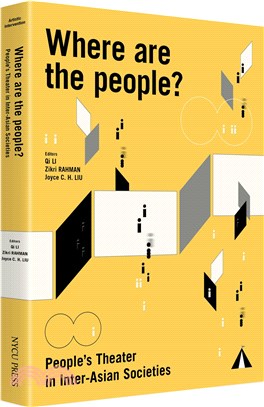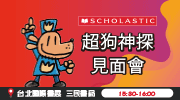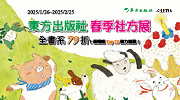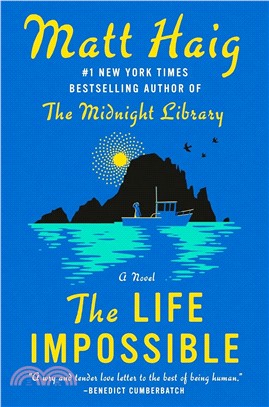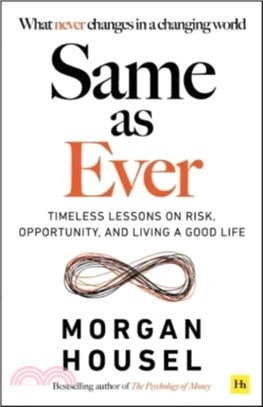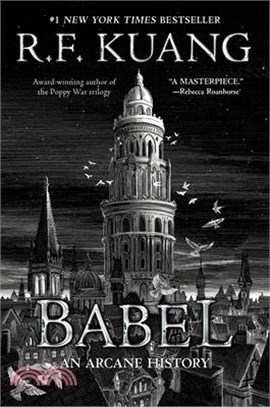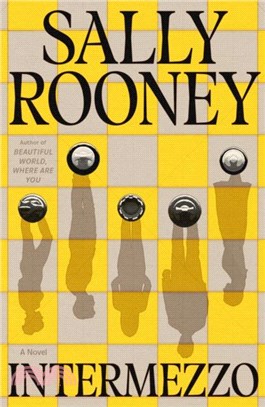Where are the people?:People’s theater in Inter-Asian Societies
商品資訊
系列名:Artistic and Social Action Series
ISBN13:9789865470500
出版社:國立陽明交通大學出版社
作者:Qi LI; Zikri Rahman; Joyce C.H. LIU-主編
譯者:BAEK JIN-SOL; KRIS CHI;VICTOR FUNG TSZ CHING; LEONG JIE YU; LIANG CHUN-WEN; LO CHUN YAT; TIMOTHY; SHU-CHUAN LIN; IP PO YEE; JONATHAN S. PARHUSIP; KIN TONG
出版日:2022/11/21
裝訂/頁數:平裝/320頁
規格:23cm*17cm*1.5cm (高/寬/厚)
版次:初
商品簡介
Where Are the People?
How Could the People’s Bodies Voice Themselves in the Form of
Theatrical Aesthetics?
At That Time, the Audience Really Stood Up.
In this evening, theater practitioners initiated the conversation with physical action. They engage with contemporary issues through their unique performance styles. From a discursive context, they enter the scene of resistance and undertake the labor of performance. Their performance is not just the preface to a series of dialogues, but also a witness to thirty years of People’s Theater.
“People’s theater” belongs to the people.
It is the theater created by the people and speaks for the people as it has appeared in history in diverse forms.
People theater in Inter-Asian Societies began to grow in a cross-region, which included Jakarta, Manila, Bangkok, Kuala Lumpur, Hong Kong, Tokyo, Busan, Maputo, Beijing, Shanghai, Hualien, Taichung, and Taipei. Through the writings and images written down by theatrical artists from these spaces, we can figure out the body aesthetics that carry historical conflicts and the experience to find the form and channel of expression, and continue for work of thinking and creation.
“People Theater” is nothing but a rehearsal for a revolution.
This book has reviewed and reflected on the half-century development of people’s theater in inter-Asian societies, demonstrates how the theatrical practitioners and artists in different communities strived to open various spaces, dealt with the censorship from the authoritarian regime to the neoliberal societies, and experimented with diverse aesthetics and local objects to address political issues.
▍Preface
“It is a collection with the premise that can motivate our critical thinking with bodily energy. It reflects how we realize the statement—‘Viewing as participating; audience as actors.’It is also a book where some keywords constantly appear, like resistance, politics, the oppressed, and conversation. With its humming buzz and murmur against the present situation, it is a collection of words refusing to remain silent.”— Lin Hsin I(Associate Professor at the Institute of Applied Art, National Yang Ming Chiao Tung University)
▍People’s Theater Practitioners
Asian People’s Theatre Festival Society (Hong Kong)/Assignment Theatre (Taiwan)/Centre for Applied Theatre, Taiwan (Taipei)/Grass Stage (Shanghai)/Langasan Theatre (Hualien)/Makhampom Theatre Group (Ching Dao/Bangkok)/Oz Theatre Company (Taipei)/Philippine Educational Theater Association, PETA (Manila)/Shigang Mama Theater (Taichung Shigang)/Teater Kubur (Jakarta)/Teatro em Casa (Mozambique)/Theater Playground SHIIM (Busan)/Trans-Asia Sisters Theater (Taiwan)/WANG Mo-lin (Taiwan)/Wiji Thukul (Solo)/Yasen no Tsuki (Tokyo)
▍Recommenders
Lai Shu-Ya /Director, Centre for Applied Theatre, Taiwan
Chen Chieh-Jen/Artist
Chen Hsin-Hsing /Professor, Graduate Institute for Social Transformation Studies, SHU
Chou Hui-Ling/Professor, Department of English, NCU
Hsu Jen-hao/Associate Professor, Department of Theater Arts, NSYSU
Kuo Li-Hsin/Professor, Department of Radio & Television, NCCU
Shih Wan-Shun/Associate Professor, Department of Taiwan Literature, NTHU
Yao Lee-Chun/A Director of Body Phase Studio–Guling Street Avant-garde Theatre (GLT)
▍Characteristics of this book
1.Beyond the geographical limitations of Taiwan and East Asia, combined the context of Inter-Asian societies and Third-World society, appreciate the theater work methods that are intertwined with folk culture and community traditions, and promote the practice of public theater.
2. This book focuses on depicting network relationships in specific historical periods, and explores how the cooperation and interaction of troupes in these heterogeneous regions occurred. And how do these interactions affect the characteristics and forms of popular theater organizations in the transition of different policies?
3. What this book looks back on is not only the continuation and development of troupes but also the sudden change or gap between new people theaters and old people theaters.
作者簡介
▍EDITORS INTRODUCTION
Qi Li
Qi Li is a Ph.D. student in Institute of Social Research and Cultural Studies in National Yang Ming Chiao Tung University. She came to Taiwan out of curiosity, then got a journey full of adventures. Her ongoing projects focus on life stories of the small theater practitioners, the technologies of mobility and governance in contemporary conditions, and the political-economic transitions on both sides of the Taiwan Strait over the last half-century. She writes articles and reviews for independent media and research institutions based in different countries. She was the coordinator of “Where the People Are…Workshop on People’s Theater in Inter-Asian Societies” in December 2018.
Zikri Rahman
Zikri Rahman has consistently embarked on collaborations with educational and cultural activist groups in various socio-political projects through Buku Jalanan, a rhizomatic network of street library movement he co-founded in the year 2011. Operating as a loose cultural and knowledge workers movements, it focuses on decentralizing the modes of knowledge production. Other than that, he is also affiliated with Pusat Sejarah Rakyat, independent archival research and documentation focusing on Malaysia and Singapore’s people’s history. With LiteraCity, he initiated a literary and cultural mapping project in the city of Kuala Lumpur. Currently pursuing his postgraduate studies in Social Research and Cultural Studies in Taiwan, Zikri is also a writer, independent researcher, translator, and podcaster for various ephemeral platforms.
Joyce C.H. Liu
Joyce C.H. Liu received her Ph.D. degree in Comparative Literature in 1984 from the University of Illinois at Urbana-Champaign, USA. Currently, Dr. Liu is the Director of the International Center for Cultural Studies, and a full-time professor at the International Program in Inter-Asia Cultural Studies, and the Director at the National Yang Ming Chiao Tung University. Her research focuses on geopolitics, biopolitics, border politics, internal coloniality, unequal citizens, epistemic decolonization, and artistic interventions. She has published six books, 100 peer-reviewed journal articles, and chapters and coedited nine books. She is leading two ongoing joint research projects: “Conflict, Justice, Decolonization: Critical Inter-Asia Cultural Studies,” awarded by the Ministry of Education, Taiwan (2018-2022), and “Migration, Logistics, and Unequal Citizens in the Global Context” (2019-2022), awarded by CHCI-Mellon Foundation.
▍CURATOR OF THE OPENING NIGHT
YAO Lee Chun
Theater director, producer and festival director, film researcher and curator.The director of Body Phase Studio since 2007 and has been as Director of Guling Street Avant-garde Theatre (GLT) since 2008.
▍PHOTOGRAPHER
HSU Ping
A documentary photographer. Over the past three decades, he has consistently documented the diverse phenomena of the post-Martial Law Taiwan and on/off the stage of modern theaters.
▍AUTHORS
Ratu Selvi Agnesia/A young female theater researcher active in Jakarta.
Glecy Cruz ATIENZA/A Professor at the College of Arts and Letters, University of the Philippines, Diliman, Quezon City.
AU Sow Yee/A guest writer for the online magazine No Man’s Land; Co-founder of Kuala Lumpur’s Rumah Attap Library and Collective.
BAEK Dae-hyun/A producer and an actor for the works of SHIIM.
Richard BARBER/A theater worker and independent scholar working as the co-director of Free Theatre in Melbourne, Australia and advisor to the Makhampom Theatre Group in Thailand.
Assane Alberto CASSIMO/A coordinator and founding member of Associação Teatro em Casa.
CHUNG Chiao/A playwright, theater director, poet, and the artistic director of Assignment Theatre.
Dindon W.S./The Director of Teater Kubur.
Muhammad FEBRIANSYAH/A lecturer at School of Social Sciences, Universiti Sains Malaysia, Penang.
HAN Jia-ling/A history and rural education scholar and activist.
HONG Seung-yi/Currently working at Theater BAKK.
Hsiao-Chuan HSIA/A Professor at the Graduate Institute for Social Transformation Studies, Shih Hsin University.
KUO Liang-ting/An adjunct lecturer at the Chinese Department of National Chung Cheng University.
LEE Show Shin/An artist from community people’s theater and a family care worker.
LIU Hsin-hung/The main participant of Yuquan Training since 2015.
Adaw Palaf LANGASAN/The founder and director of Langasan Theatre.
WANG Chu-yu/A contemporary artist, performance artist, and curator based in Mainland China.
WANG Mo-lin/A theater director, performance artist and cultural critic Robin WEICHERT (Tokyo).
Robin WEICHERT/A teacher of Hosei University, Tokyo.
WU Sih-Fong/A theater Critic, Associate editor of Performing Arts Forum (Macau).
ZHAO Chuana/A writer, theater maker and curator who creates alternative and socially engaged theater in China. Also, he is the founding member and mastermind of the theater collective Grass Stage since 2005.
▍TRANSLATORS
BAEK Jin-sol/A student of master programme of Inter-Asia Cultural Studies at National Tsing Hua University in Taiwan.
Kris CHI /M.A. of National Central University Department of English.
Victor FUNG Tsz Ching/A freelance translator graduated from Department of English, City University of Hong Kong.
LEONG Jie Yu/A Master’s degree in English Language Studies from the University of Malaya.
LIANG Chun-wen/Graduated from Department of English, National Central University.
LO Chun Yat, Timothy/M.A. of the Institute of Social Research and Cultural Studies, National Yang Ming Chiao Ting University.
Shu-Chuan LIN/M.A. of National Chung Hsing University Department of Foreign Languages and Literatures and freelance translator.
IP Po Yee/M.A. of the Institute of Social Research and Cultural Studies, National Yang Ming Chiao Tung University.
Jonathan S. PARHUSIP/Ph.D. of the Institute of Social Research and Cultural Studies, National Yang Ming Chiao Tung University.
Kin TONG/A translator and researcher on psychoanalysis theory.
序
Where Are the People?
How Could the People’s Bodies Voice Themselves in the Form of
Theatrical Aesthetics?
Joyce Chi-hui LIU
Translated by Kris CHI
Proofread by LO Timothy and Zikri RAHMAN
Whose Faces of People’s Theater Has This Book Shown?
The book held in your hands—Where are the people: People’s Theater in Inter-Asian Society—is the result of the “Workshop on People’s Theater in Inter-Asian Society” hosted by the International Institute for Cultural Studies of National Yang Ming Chiao Tung University in December 2018. We invited theatrical practitioners and researchers from Jakarta, Manila, Bangkok, Singapore, Kuala Lumpur, Hong Kong, Tokyo, Busan, Maputo, Beijing, Shanghai, Hualien, Taichung, and Taipei to engage in this three-day activity.
Southeast and Northeast Asia experienced similar and interweaving historical processes. After World War II, Asian regions entered the Cold War phase. To follow the implementation of containment with the strategic foreign policy of the United States and the Treaty of Mutual Cooperation and Security between the U.S. and Japan, various right-wing authoritarian governments supported by the U.S. declared martial law at different stages and mounted internal purges. Since the 1950s, cultural workers and intelligentsia in the Philippines, Indonesia, Thailand, Malaysia, and Singapore had been arrested and accused of participating in communism; Taiwan, Japan, and Korea also had the same kind of anti-communist purges. In the 1980s, people’s theaters began to grow in the Southeast Asian and Northeast Asian countries, and the cross-region connection in the inter-Asian society was established, which was significantly meaningful in the context of this history.
“People’s theater” belongs to the people. It is the theater created by the people and speaking for the people; it has appeared in history in diverse forms. Romain Rolland’s Le Théâtre du peuple was published in the early twentieth century. In this1903 book, Rolland declared that the people’s theater should not be the theater defined by the State because the State belongs to the past, while the theater of the people belongs to the future. Theaters of the State and the palace offered conservative and petrified forms. From the French Revolution to the October Revolution in Russia, the people’s theaters were born to serve the people. The State withdrew from the theater and the people entered the scene, hence the names such as People’s Theater and Popular Theater which emerged from different socio-political situations in various sites.
The most influential and widespread form of the people’s theater is “Theatre of the Oppressed,” advocated by Augusto Boal during the 1950s and 1960s in Brazil. Inspired by the Pedagogy of the Oppressed, the work of his good friend, Paulo Freire, Boal conceived “Theatre of the Oppressed” as a site for the oppressed to think about their dilemma in life. The audiences in this theater are also participants. By confronting their problems, arguing with one another, challenging the law, and playing roles together, they experiment with alternative methods to break away from the oppressive ideology. As the critical pedagogy suggested by Paulo Freire, critical consciousness should come from the critical self-awareness of the people themselves. They need to say no to be the container in which the superiors can inculcate regulations, decline to obey unreasonable conditions, and discern the emergence of various oppressive ideologies in their societies. Through their participation, they reveal the reality by questioning and challenging various myths which have been taken for granted for so long.
The underclass voices through the theater, in which the people carry out various forms of radical democratization. Such a phenomenon appears both on the African and Asian continents. Around the 1960s and 1970s, “Theatre for Development” appeared in Africa, and folk theaters with different approaches and techniques also sprang in Asian regions. For example, during the martial law period in the Philippines, a group of artists and teachers formed the Philippines Educational Theater Association (PETA) in 1967, which was the predecessor of Theatre for Development; during the 1970s and 1980s, the student movement in Korea triggered “Madang Theater;” in the 1970s Sakurai Daizō started “Tent Theatre.” These different experimentations are all expressive forms of people’s theater. For nearly three decades, various forms of people’s theater have been developed in Taiwan, Hong Kong, Indonesia, Thailand, Singapore, Malaysia, India, and China.
In this book, we will see the theatrical practitioners in various places in the Inter-Asia society. From the Cold War to the post-Cold War era, they respond to the complex problems in various regions through their unique ways of confronting different political and social contexts. For example, in the case of Taiwan, both Wang Mo-lin and Chung Chiao are too influential to be ignored, inspiring various theater groups and theatrical works. The practice of theater emerged and bloomed in Southeast and Northeast Asia. I can only invite readers to read through the paths trodden by these theatrical practitioners. Herewith, I believe everyone will have a clear outline of the intricate map of the people’s theater in the Inter-Asia society.
What Kind of Problem Should We Ponder Over via People’s Theater?
I propose that we contemplate the following questions:
How can the body bring forth critical consciousness? How can people’s theater manifest its theatrical aesthetics? What is today’s notion of the people? Can theatrical aesthetics change society or the State? Can the theater disrupt the social relation or the relations of its production?
First, how can the body raise critical consciousness? How can people’s theater manifest its theatrical aesthetics?
Bodies in people’s theater should not only be the vehicles of external “aesthetic formalism” or “body language.” Instead, they are the bodies inscribed with the materiality of historical memories and bodily feelings and, to a certain extent, even expose the people’s subject positions. Historical memories and physical sentiments of this sort are overlaid with the oppressive systems composed of complicated institutions, legislations, class, and ideology. Behind such an unjust system is the epistemology that makes up the system.
Teater Kubur from Indonesia is the best example of this. For thirty years, Dindon W.S., the director of the troupe, has invited people living nearby the cemetery of East Jakarta to join this troupe, especially the students who are out of school and entry-level workers who are alcoholics or receive a meager salary. From the amateur performing group to an award-receiving troupe, Dindon leads the troupe with his steadfast principle—by utilizing the elements in people’s lives andtheir daily languages. Dindon makes local languages and everyday objects such as bamboo, buckets, chairs, and dustpans the symbolic form or metaphors of daily life to evoke bodily feelings to observe the situations. From the Indonesian New Order era to the present age of globalization and neoliberalism, people endure oppression in different forms, which Teater Kubur then criticizes.
In their opening performance during the 2018 workshop, the debate of the Indonesian congress members in discussing developmentalism was projected onto the background. On the stage, two office chairs were being aggressively pushed around. Office chairs are the metonymy of congress in moving the development acts. This scene highlights the incompetence of people who cannot resist neoliberalist development by manipulating the governmental apparatus. Like the bamboo, dustpans, or buckets, which Dindon frequently uses, these everyday life objects or their traditional culture are not merely decorative props in his works. Instead, it is a potent metaphor to trigger the body’s critical power. Besides carrying out the energy with critical consciousness to emancipate politics through bodies, people’s theater demonstrates theatrical aesthetics to us.
Similarly, another opening performance entitled Goodbye! mom, directed by Wang Mo-lin, also showed theatrical aesthetics’ immense strength. Hong Seung-yi and Baek Dae-hyun, actors from the Korean troupe Theater Playground SHIIM, presented the event of the 1970s Korean labor movement. In this incident, Jeon Tae-il immolated himself as an act of sacrificial protest against the government’s unjust treatment of the working class. In this play, the two actors played the role of mother and son. The mother recalled the moment before her son carried out the act of self-immolation. The slow bodily movement of the two actors highlighted the mother’s regret when she recalled the irreversible event and the tension between the decisive son and the cruel progress of historical time. The bodies and emotions onstage intensely triggered the bodies and feelings of the audience, situated in the slowly extended but irresolvable strain with great shock.
Second, what is today’s notion of the people? Can theatrical aesthetics change the society or the State? Can the theater disrupt the social relation or the relations of its production?
Plebeian, commoners, people, the populace, or proletarians refer to the people who offer their labor but have no autonomy in the relations of production. In the feudal period, proletarians could refer to the enslaved people or serfs consigned to unpaid servitude. In the nineteenth and twentieth centuries, the term refersto the factory laborers whose time and labor were exploited. Nowadays, the oppressed proletarians are not only in the factories but also on-call workers driven by the gig economy or migrant workers in the corners of metropolises. These gig workers and migrants are restrained from organizing unions and gathering to protest for themselves. It is not easy for their voices to be heard. Also, in different societies, there are still those who are the part of no part, that is, those who live here, work here, but do not belong and are not acknowledged. These part of no part exist in different corners of the society, such as ethnic minorities, transgender communities, sexual and religious minorities, stateless people, and those evacuated from their native land due to the State’s developmental project. The oppressors now are not only the States or those capitalists that monopolize the land; they are a complex network of transnational capitalist structures that continue to extract resources for their interest.
The question is: Where are the forces that can challenge the statist institutions and speak for the people today? Not only do the socialist countries embrace the neoliberal and developmental-based social institutions, but the left-wing activists also seem to be lured to the idea of nationalism which effectively affects their ability to criticize from within the countries.
As Au Sow Yee mentioned, power is a “life form that never stops evolving.” We also are aware that capitalism is an ever-evolving life.
Here, maybe we should change the way to deal with this question. Perhaps we need to think about how to equip the people in different spectrums with critical self-consciousness, how to enable the people to dissect the modern forms of oppression, and start to ask “why.”
The tensions between the State and the people exist in different spectrums of society. However, this also means that every corner is a space that can be opened up. Creating space through theater, literature, art, dance, music, video, etc., means to providing a platform for people to articulate their voices. People leave their given positions and change their societal roles on the stage, enacting the conflicts imbued with historical experiences and conflictual feelings in their bodies. The dramatization of conflicting positions will expose the lines of separation and foreground radical challenges to the oppressive system in society.
Starting from acknowledging different perspectives, through the space of the people’s theatre, in the form of critical pedagogical education, perhaps we can take back the right to speak.
Why Do We Decide to Publish This Book?
“Workshop on People’s Theater in Inter-Asian Society” in 2018 is a productive exchange of experience and knowledge. We have reviewed and reflected on the half-century development of people’s theater in inter-Asian societies. With this project, we have also outlined the theatrical maps for all future readers.
We do not want to set up museums or monuments. Instead, we hope our readers can see the dynamic movements of the struggles from different corners of the societies. Through this book, we expect the readers can understand how the theatrical practitioners and artists in other communities and historical contexts have confronted their dilemmas. This book demonstrates how these theatrical artists strived to open up various spaces, dealt with the censorships from the authoritarian regime to the neoliberal societies, and experimented with diverse aesthetics and local objects to address political issues.
Our readers will discover that, in various precarious situations, with no freedom of speech, no protection by the law, and the risk of being arrested at any moment by the police, people can still exercise their creative capacity to voice their thoughts. Different artists strove to find diverse ways to express and articulate their thoughts. They utilized various resources to transform their purposes and continued their tasks of thinking and creating.
We believe this project is the task of facing the future, granting the future artists and people in different corners of the world the courage to continue creating and expressing their voices. We also hope, with all the creative efforts this book displays, our future readers can obtain the inspiration to confront the contemporary dilemma and follow the pulse of society to manifest its forms of creativity. As Glecy Cruz Atienza from PETA said, we hope to educate and create a generation of creators. It is the creators of the next generation the ones we are looking forward to seeing.
Li Qi and Zikri Rahman, the chief editors of the book, are the key figures who materialize the book in Chinese and English versions. Their work is based on the 2018 workshop which also comprised the effort of our Ph.D. and Master’s students from different countries. They are Krystie Ng, Li Ding, Lee Chun Fung, Lan Yu Zhen, Qiu Ying Zhe, Raymond Lim, Zhao Yen Beh, Ou I-Chun, Pham Thuy Duong, Chen Sheng Yun, Christine Chou, Ip Po Yee, Jing Lee, Selta Lu, Sunny Lon, Li Hong Jun, Martina Ngai, Bonnie Man, Shao Yue, Nini Tan, Zikri Rahman, and Li Qi. Apart from the intensive discussion and planning before the workshop, these students even made separate efforts to invite different troupes and scholars to hold study groups, screening, discussion forums, an opening performance (curated by Yao Lee Chun), and an archival exhibition of people’s theater in inter-Asian societies. This result of their collective work makes me very proud of them.
July 2022
目次
Opening Night
Mapping People’s Theater
PREFACE Make Inquiries among the People: A Kind of On-site Performative Archive
LIN Hsin-I
PREFACE Where Are the People? How Could the People’s Bodies Voice Themselves in the Form of Theatrical Aesthetics?
Joyce C.H. LIU
EDITORIAL NOTES Flowing Histories of People’s Theater in the Inter-Asian Context
Qi LI and Zikri RAHMAN
Part I
Heralds of Resistance: Inter-Asian People’s Theater In the Early Days
PETA’s GOLD: Gaming the Nation, Changing Asia
Glecy C. ATIENZA
Transnational Networks, People’s Theater and Radical Opposition in the New Order Indonesia
Muhammad FEBRIANSYAH
Moving History: Representation of Teater Kubur Performances from the New Order Regime to Post-Reformation in Indonesia
Ratu Selvi Agnesia and Dindon W.S.
Sejarah Yang Bergerak: Representasi Pertunjukan Teater Kubur Dari Orde Baru hingga Pasca Reformasi di Indonesia (Indonesian)
Ratu Selvi Agnesia and Dindon W.S.
A Transformative Theater of Dialogue: The Makhampom Theatre Group’s Negotiation of Thailand’s State of Repression
Richard BARBER
Angura Afterlives: On Sakurai Daizō’s Theory of “Tent Theater”
Robin WEICHERT
Review: Beyond These Words
AU Sow Yee
Part II
Emancipation of Body: The Origin and Transformation of
People’s Theater In Taiwan
People’s Theater in Taiwan: A Flooded History
HAN Jia-ling
The Presence of the Oppressed
WANG Mo-lin
Can Theater Transform the World? Reflections on the People’s Theater in Asia
CHUNG Chiao
Theater and the Worship Ground: Langasan Theatre
Adaw Palaf LANGASAN
Return to the Theater of the Oppressed: Trans-Asia Sisters Theater’s Empowerment, Organizing and Mobilization
Hsiao-Chuan HSIA
Between Acting and Realities: Towards a Self-reflexive Practice of Shigang Mama Theater
LEE Show Shin
Review: Little Theater and the People
WU Sih-Fong
Part III
Outspreads: Practices of Peoples Theater In Our Time
The Background and Activities of Theater Playground SHIIM
BAEK Dae-hyun and HONG Seung-yi
연극놀이터 , 쉼의 설립 배경과 활동 (Korean)
BAEK Dae-hyun and HONG Seung-yi
Grass Stage at the North Gate of Foxconn: from World Factory to the Five-year
Theatrical Practice of Workers’ Theater
ZHAO Chuan
At the Boundaries of Body, Society, and Theater
WANG Chu-yu
Yuquan Training: A Perspective in the Practice of Oz Theatre Company
LIU Hsin-hung
A Self-interview: Of Teatro em Casa and Glimpses of Mozambique’s Theater
Assane CASSIMO
Review: People’s Theater, A Total War Towards the Theater Institutions
KUO Liang-ting
Appendix
Biographies of Editors, Authors and Translators
Introduction to People’s Theater Practitioners
Glossary of English-Chinese/Original Terms
主題書展
更多書展今日66折
您曾經瀏覽過的商品
購物須知
為了保護您的權益,「三民網路書店」提供會員七日商品鑑賞期(收到商品為起始日)。
若要辦理退貨,請在商品鑑賞期內寄回,且商品必須是全新狀態與完整包裝(商品、附件、發票、隨貨贈品等)否則恕不接受退貨。



